30 divine Korean temples you should visit at least once in your lifetime
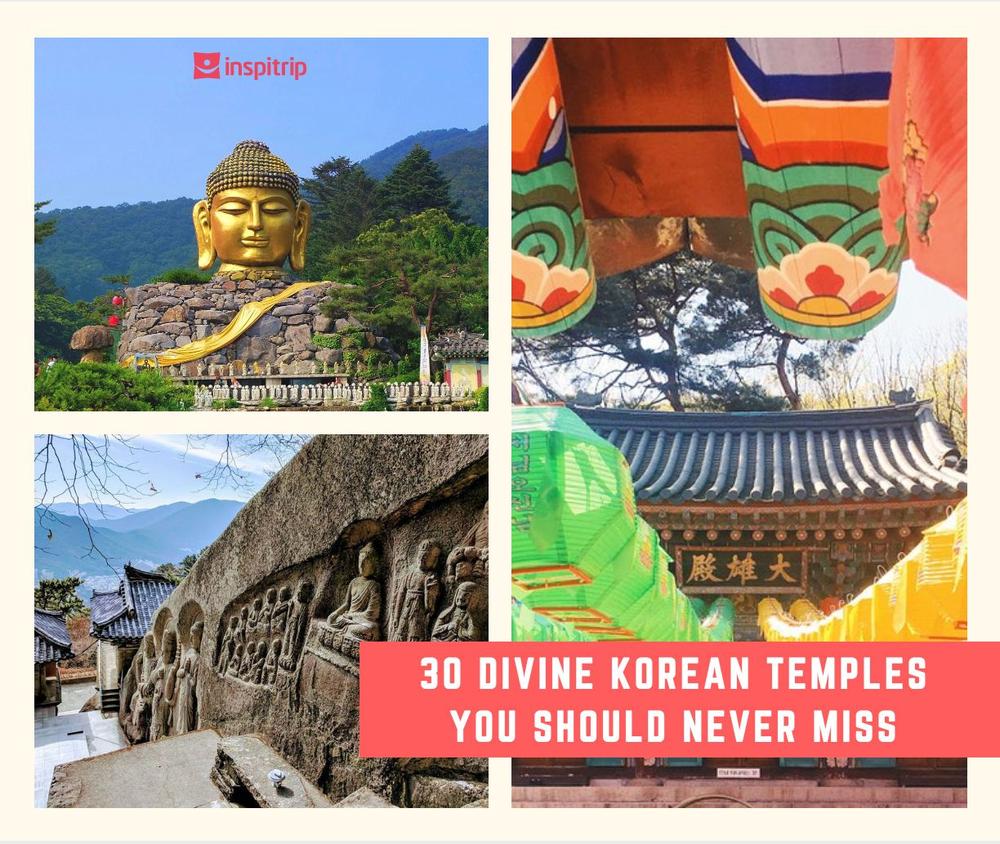
When you search for amazing things to do in Seoul in particular and in Korea in general, Korean temples always pop up as the top priorities. Korea has a 1,700-year Buddhist history, there are 900 traditional Buddhist temples in Korea. These beautiful temples offer a quiet refuge to meditate or seek the peace of mind. South Korea perfectly balances rapid urbanization with revered cultural traditions. There is a calming beauty to the 900+ traditional Buddhist temples, centuries-old architecture tucked among the country’s numerous mountains. A visit to any of these local places of worship can be an uplifting experience. Here are 30 divine Korean temples you should visit at least once in your lifetime.
1. Gagwonsa Temple (각원사)
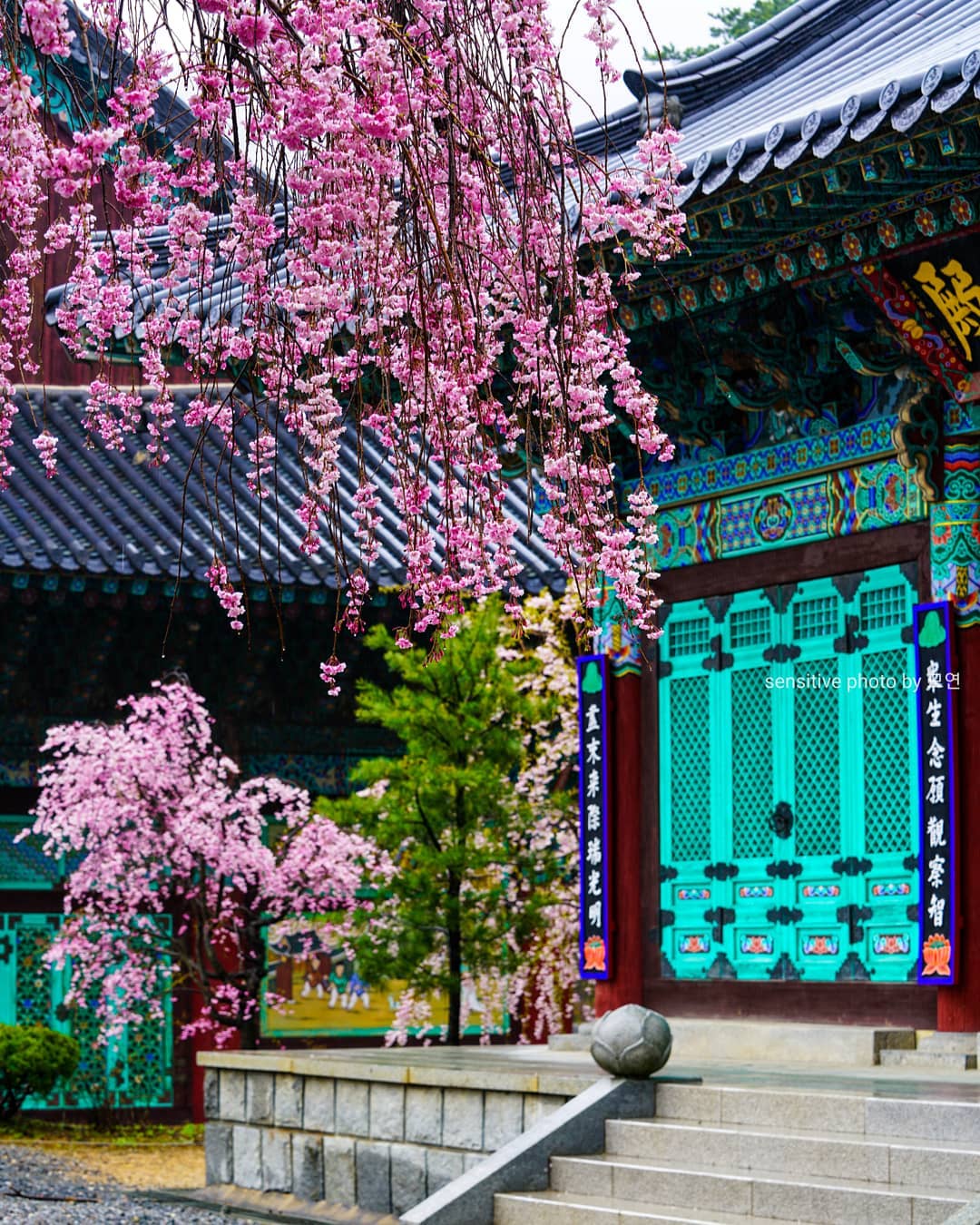
Located at the foot of Mt. Taejosan, Gakweonsa Temple can be spotted 3 kilometers from Cheonhoji pond near Cheonan Interchange. It was enshrined on 1977 to pray for the reunification of North and South Korea. The temple contains a bronze statue of Buddha, which is 15m in height, 30m circumference, has 175cm long ears, 30cm long nails and weighs 60 tons. It is the biggest temple next to Bulguksa Temple in Gyeongju and it is gaining popularity as Cheonan’s new tourist attraction.
2. Bongeunsa Temple (봉은사)
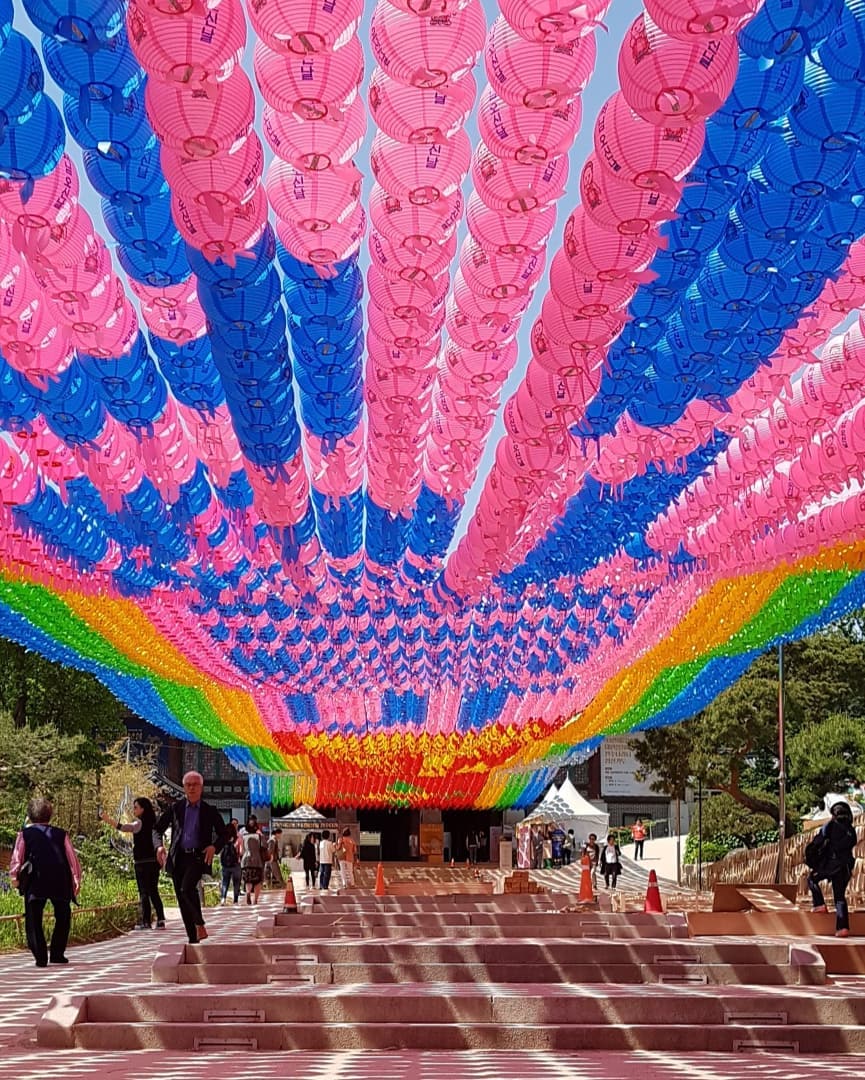
Bongeunsa is a Buddhist temple located in Samseong-dong, Gangnam-gu in Seoul. It was constructed in the 10th year of Silla King Weongseong’s reign. It is located on the slope of Sudo Mountain, across the street from the COEX Mall. Originally located near the Royal Tomb of King Seongjong, the temple was transferred to its current location during Joseon King Myeongjong’s reign. The Buddhist ceremony called Jeongdaebulsa is held on the ninth day of the eighth month of the lunar calendar, where monks march while carrying the scriptures on their heads and reciting the Beopseongge (Buddhist rites). Embrace the Korean divinity by joining the best Seoul city tour by Inspitrip now!
3. Haedong Yonggung Temple (해동 용궁사)

Haedong Yonggung Temple is a Buddhist temple in Gijang-gun, Busan. The temple was built in 1376. The temple complex is a large one and one of few in Korea to be set on the seaside.The temple is popular with sightseers, particularly during Buddha's Birthday celebrations when the complex is decorated with paper lanterns. Many people often come to this spot on New Year's Day to make a wish for the new year as they watch the sun come up.
4. Tapsa Temple (마이산 탑사)

Tapsa Temple is located 1.9km away from the southern parking lot of Maisan Mountain in Jeollanam-do. Tapsa Temple is famous for the over 80 stone pagodas built by Lee Gapyong, a retired scholar. Those stone pagodas come in different sizes and shapes, from cone-shaped to straight-shaped. It is said that those stone pagodas were made in the late 1800's entirely by Lee Gapyong alone; he collected stones in the daytime and built the pagodas at night. Tapsa Temple is also well known for cherry blossoms in the spring, covering an area of 1.9km from Nambu (south) parking lot of Maisan Mountain to the entrance.
5. Sudeoksa Temple (수덕사)

The Sudeoksa Temple, which has played an important role in the history of Korea’s Buddhism, is located in the Deoksungsan Mountains. The main building of the Sudeoksa Temple, the Daeunjeon, has been preserved in its original condition. This was first constructed in 1308 and has been designated a national treasure. Between 1528 and 1803 it was repaired four times but fortunately kept its original beauty.
6. Manggyeongsa Temple (망경사)

Manggyeongsa Temple is situated on Taebaek mountain, at an altitude of 1,460 meters. Legend says a stone statue of the Bodhisattva of wisdom appeared at the Manggyeongsa Temple site. A monk from the Silla Dynasty built the temple to enshrine the statue. Near the entrance of the temple, there is a spring called "Dragon Spring" which is known to be the highest spring in Korea.
7. Saseongam Hermitage (사성암)

Saseongam was built in 544 by a Buddhist monk named Yeongi. The temple was named Saseongam, meaning “Four Saints Hermitage”, because it’s where four famous Buddhist monks meditated. The building containing a statue of Buddha is at the tip of the cliff, on a stone terrace made by pieces of the cliff rock, and this is why the structure looks like a pagoda and natural part of the cliff. The entire cliff looks as though it’s supporting the building like a gigantic stylobate, a feature that adds to the artistic value of the natural-looking structure.
8. Taeansa Temple (태안사)

Located on the foot of Dongrisan Mountain, Taeansa Temple was built by three monks during the reign of the Silla King. Afterwards monk Hyecheol constructed a large temple with 132 rooms during Koryeo Taejo’s reign, which was established as a central seminary of the Dongrisan Mountain area. There are four treasures in the temple, including Hyecheolguksa Sari Pagoda, Gwangjaseonsa Pagoda and Neungpagak which are worth seeing. An invigorating valley and a shady nook can be reached from the entrance of the temple. It is a popular trail during the fall, with its bright maple leaves.
9. Naejangsa Temple (내장사)
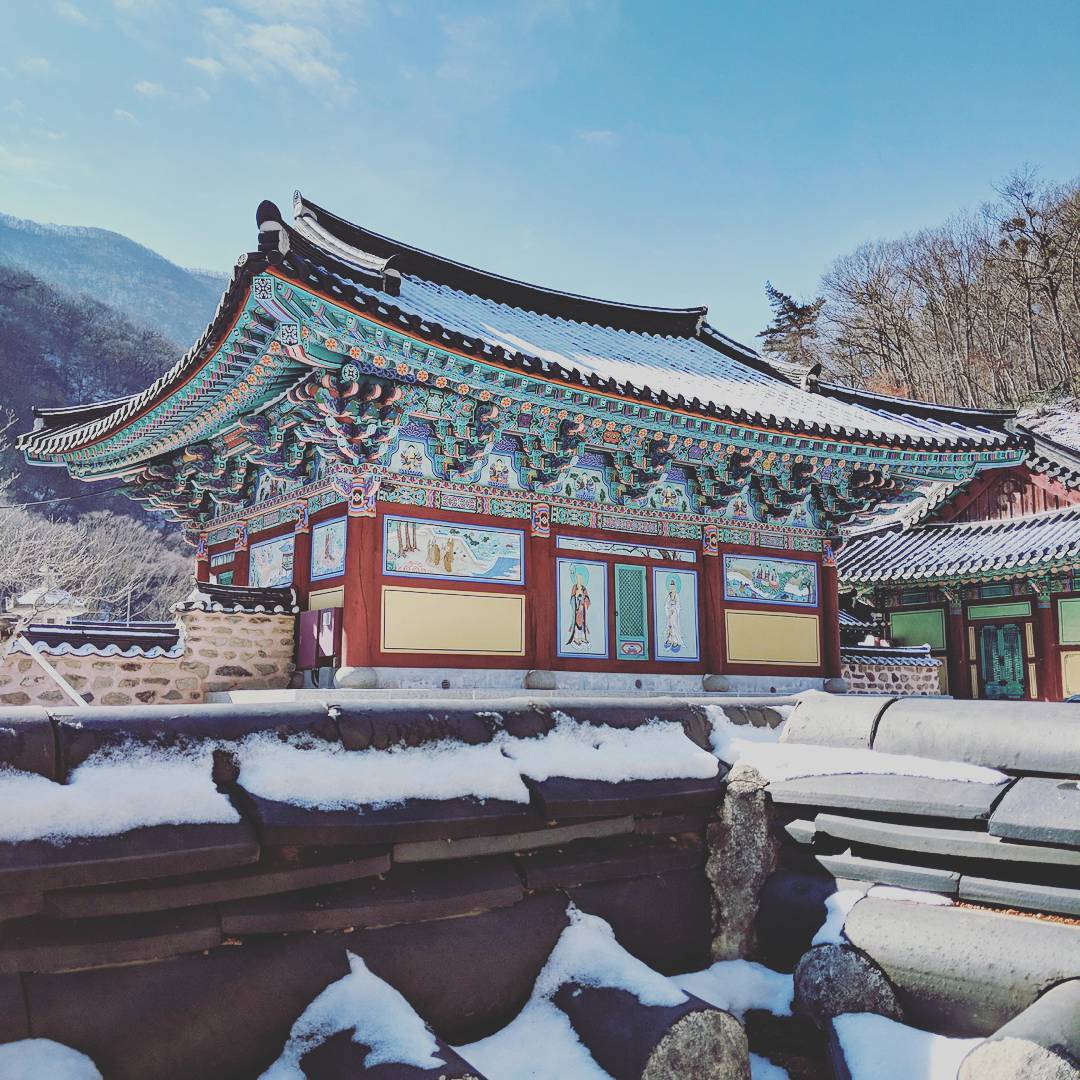
Naejangsa Temple is located in the midst of the beautiful Mt. Naejangsan National Park. The temple is said to have been built by the Buddhist monk Yeongeunjosa in the year 636 of the Baekje Dynasty. The present temple is largely the result of reconstruction efforts completed in the 1970s. One of the most prized treasures at the temple is the Ijo-dongjong Bell, considered a major cultural asset. Surrounded on all sides by towering peaks, Naejangsa Temple boasts a picturesque landscape that is particularly striking in the fall when the mountains turn crimson with autumn leaves.
10. Seokbulsa Temple (석불사)
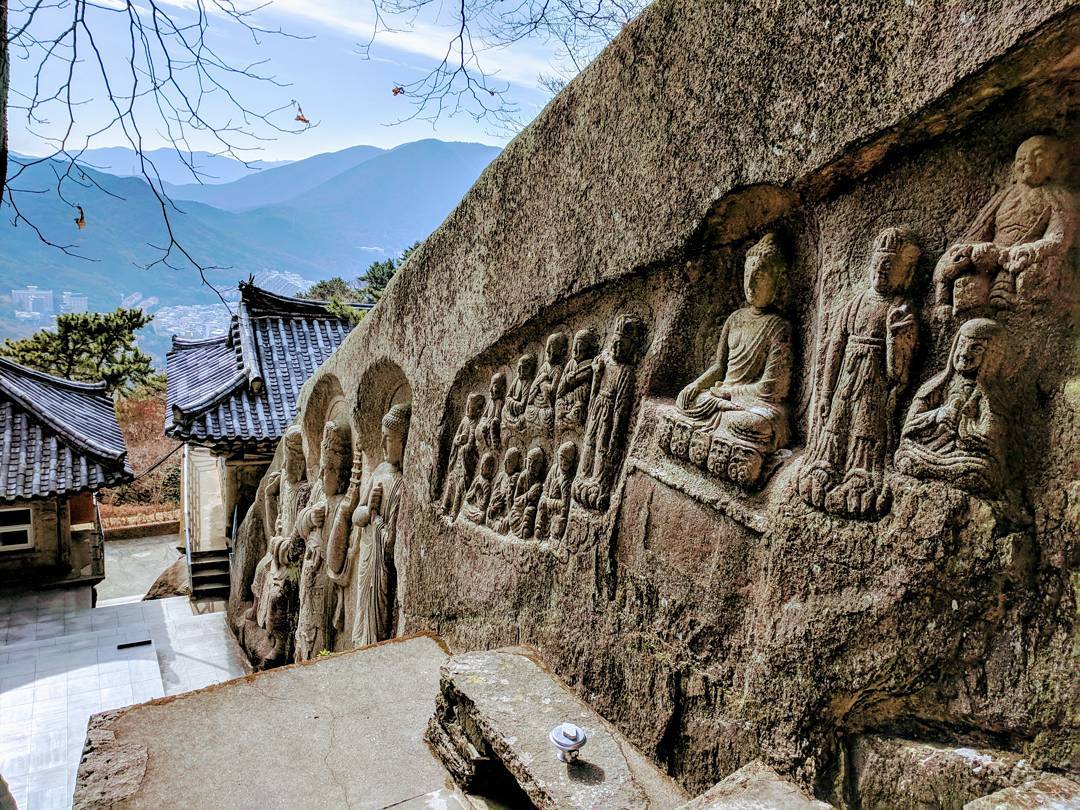
The Seokbulsa Temple, often referred to as one of Korea’s hidden gems, can be found just outside of Busan. The temple is a marvelous site that contains massive stone carvings as well as some rather impressive temple buildings. Seokbulsa temple may be a bit difficult to get to, but is often referred to as the most memorable temple experiences in all of Korea and very much worth the visit. From the massive stone carvings to the incredible views, Seokbulsa Temple is an impressive sight to behold.
11. Daewonsa Temple (대원사)
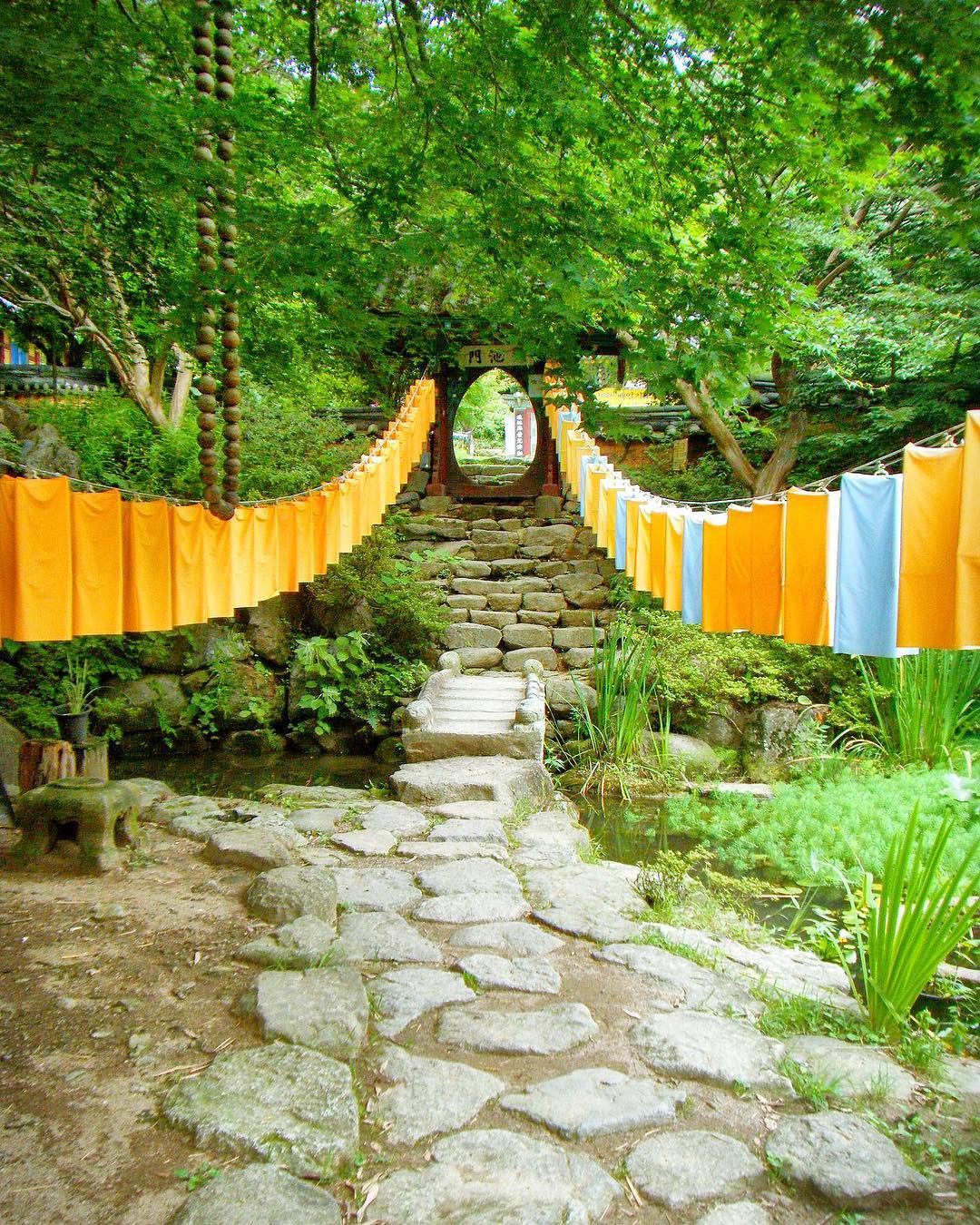
Located at the eastern foot of Jirisan Mountain, Daewonsa Temple was first built in 548 during the Silla Dynasty, but it remained closed for over a thousand years until it was renovated and made much bigger and renamed Daewon. The temple underwent a second renovation following damage sustained during the Korean War, further increasing its size. Located nearby are Geoyeonjeong and Gunjajeong Halls that are believed to have been the studying venue of scholars from old times.
12. Daejeonsa Temple (대전사)
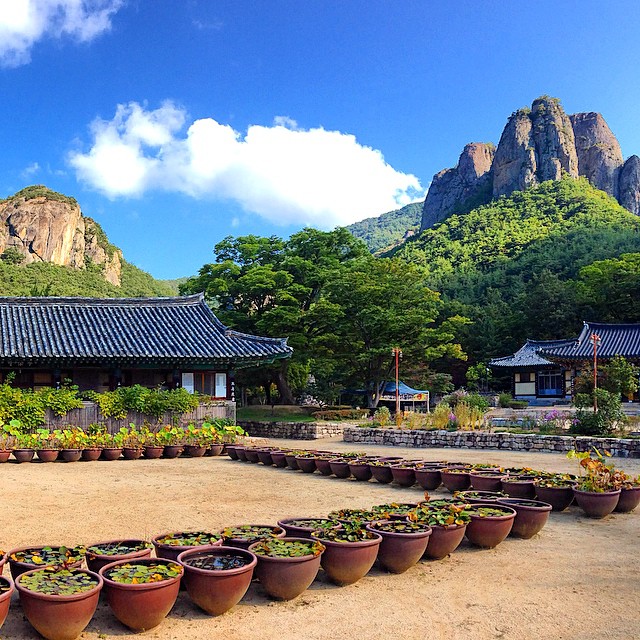
Daejeonsa temple is said to have been built by Great Monk Uisang in the 12th year of King Munmu’s reign. It was rebuilt in the 13th year of King Hyeonjong’s reign after a fire destroyed the original temple complex during the Imjin War. During rennovation of the Bogwangjeon Hall in 1976, a text that had been put up with the ridge beams was found. Bogwangjeon Hall is a small building and its ceiling is in the form of the sharp symbol. A Birojanabul Buddhist statue is enshrined in the hall.
13. Cheongpyeongsa Temple (청평사)

Cheongpyeongsa Temple is located on the beautiful misty slopes of Obongsan Mountain, and can be reached after enjoying a 10-minute ferry ride from Soyang Lake Ferry Dock. The temple was built in 973 during the reign of King Gwangjong of the Goryeo Dynasty. In the sixth year of Goryeo King Seonjong (1089). In his time on the mountain Lee created a vast garden near Cheongpyeongsa Temple. Stone walls surround the garden to create a square shape when viewed from outside, and water from the valley was redirected into the garden to form a pond that would reflect the image of Obongsan Mountain.
14. Seongnamsa Temple (석남사-울산)
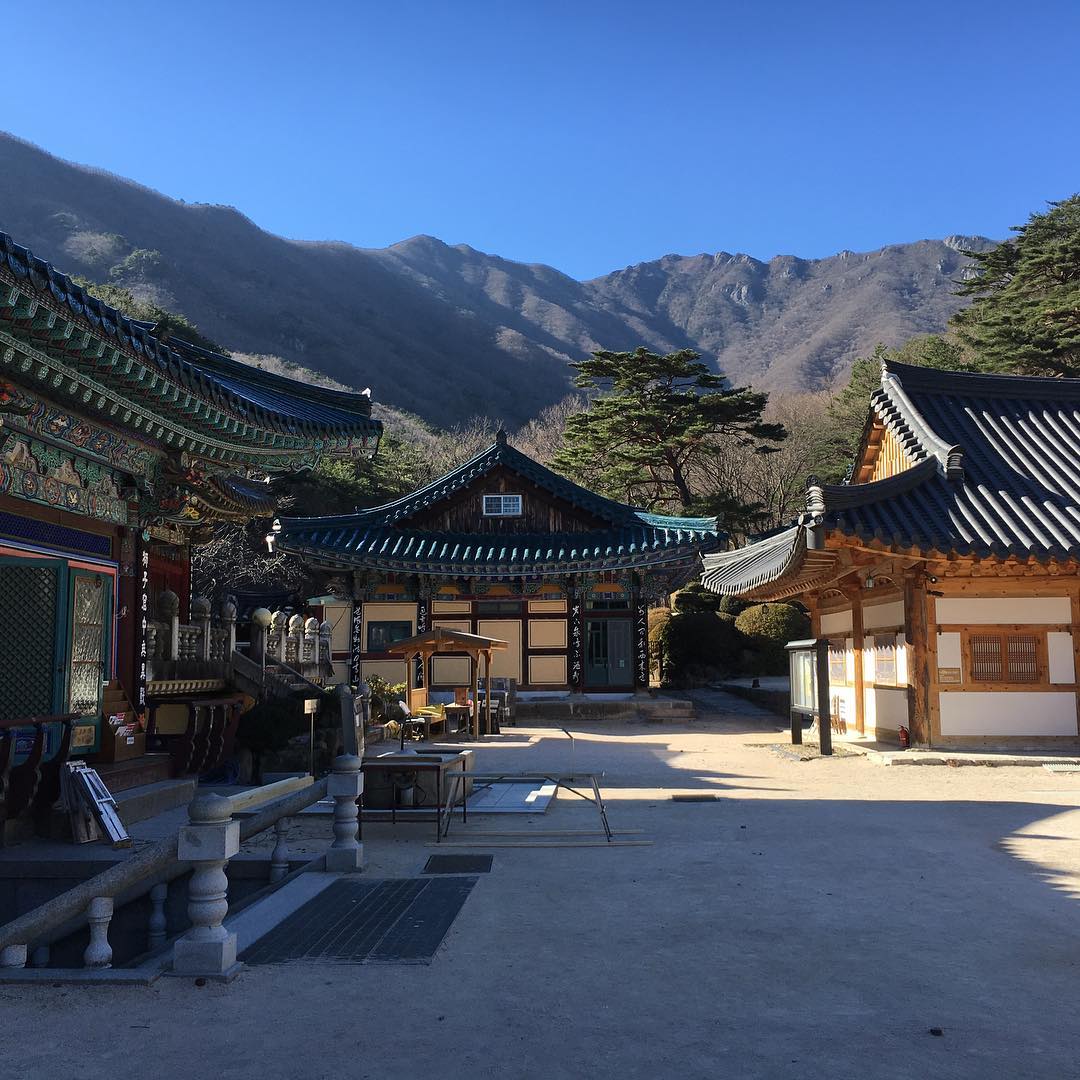
The name of the temple is believed to have originated from the fact that it is located in the south of Gajisan or Seokansan. It was built in 824 A.D. (during the 16th year of King Heondeok’s reign). It has gone through rebuilding several times. Consisting of 30 buildings, the temple is home to many Buddhist nuns. Other notable relics in the temple include the Statue of Monk Doui, Three Story Sarira Pagoda, and Stone Water Tank.
15. Magoksa Temple (마곡사)
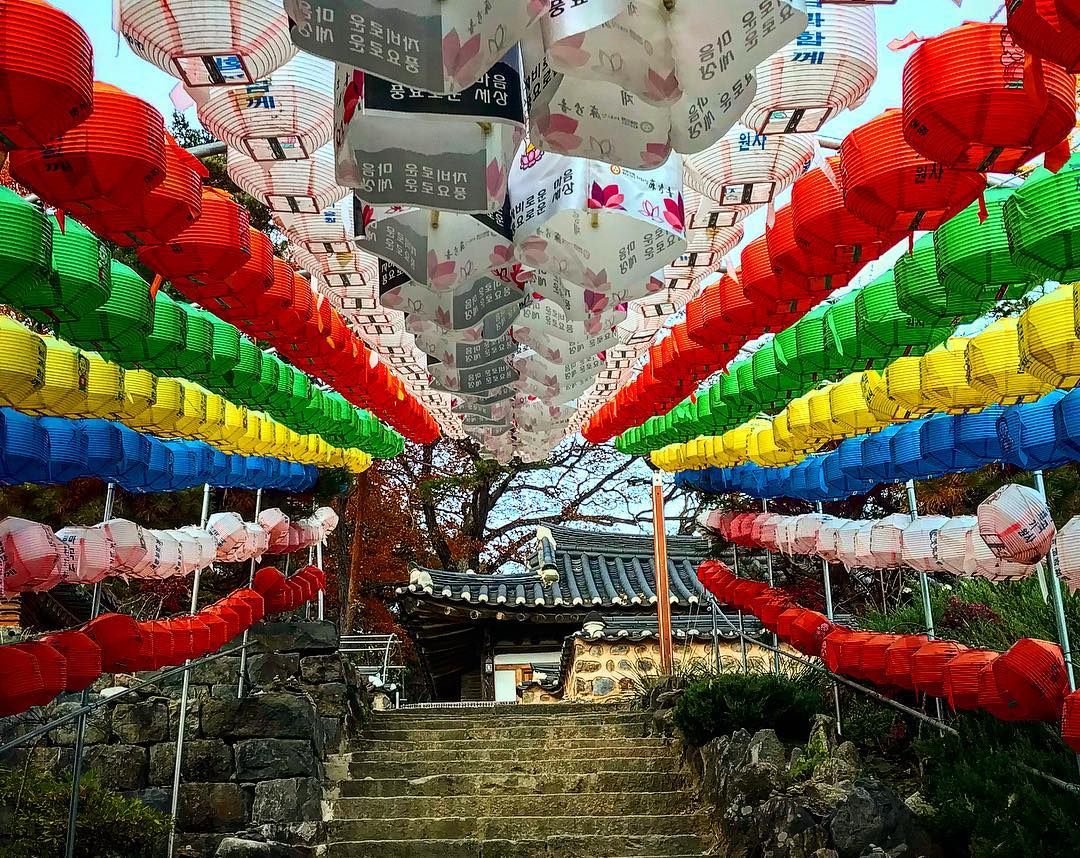
Magoksa Temple was founded by Monk Jajangyulsa in 640, a representative temple of the Chungcheongnam-do Province. Magoksa is surrounded by a mountain and rivers curving into a yin-yang shape. This has become the temple’s claim to fame, as the beauty from the surrounding mountains is renowned, especially where Taegeukcheon River flows in the shape of the yin-yang. It is most beautiful during the springtime, when the cherry blossoms, sansuyu, and magnolias fill the whole area.
16. Hwagyesa Temple (화계사)
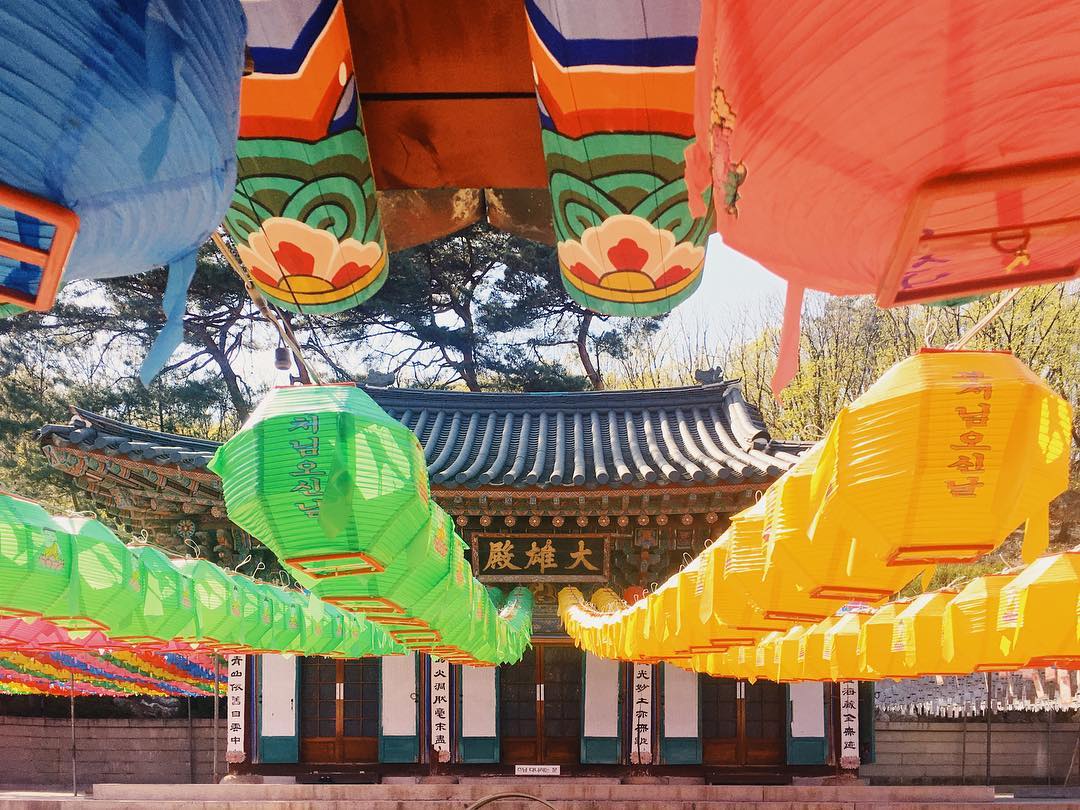
Hwagyesa Temple, which falls under the Chogye Order of Korean Buddhism, is located at the foot of Mt. Samgaksan in Suyu-dong, Gangbuk-gu, Seoul. Although it is located in the city of Seoul, the beautiful surrounding mountains and landscapes create a serene atmosphere to escape urban life. It was built in 1522 AD by monk Shinwol. A small water spring, named Oktakcheon and located in the valley beside Hwagyesa Temple, is famous for supernatural healing powers of skin and stomach diseases.
17. Beomeosa Temple (범어사)

Beomeosa Temple is located at the eastern edge of Geumjeongsan Mountain, a famous mountain in Busan. It was constructed by monk Ui Sang in the 678. It is one of the three most famous temples in the Yeongnam region, along with Haeinsa Temple and Tongdosa Temple. Daeungjeon Hall is one of the most delicate and luxurious architectures of the Joseon Dynasty. Other important sites of the temple include Iljumun Gate, a three-story pagoda with four pillars built in the 9th century; pavilions, gates, and eleven hermitages. Beomeosa Temple also operates a temple-stay program for visitors to learn more about the Buddhist culture and discover oneself.
18. Haeinsa Temple (해인사)

Haeinsa Temple was founded during the third year of King Ae-Jang's reign (802), by two monks Suneung and Ijung. The name "Haein" originates from the expression Haeinsammae of Hwaeomgyeong (Buddhist scripture), which means a truly enlightened world of Buddha. Along with the Tripitaka Koreana and Janggyeongpanjeon, 15 more public treasures and some 200 private treasures are enshrined at Haeinsa Temple, which has been appointed as a universal cultural heritage for its many cultural properties and historical remains. Iljumun Gate was the first gate that every sattva must pass to become a Buddha and considered as a representative work of ancient architecture.
19. Tongdosa Temple (통도사)
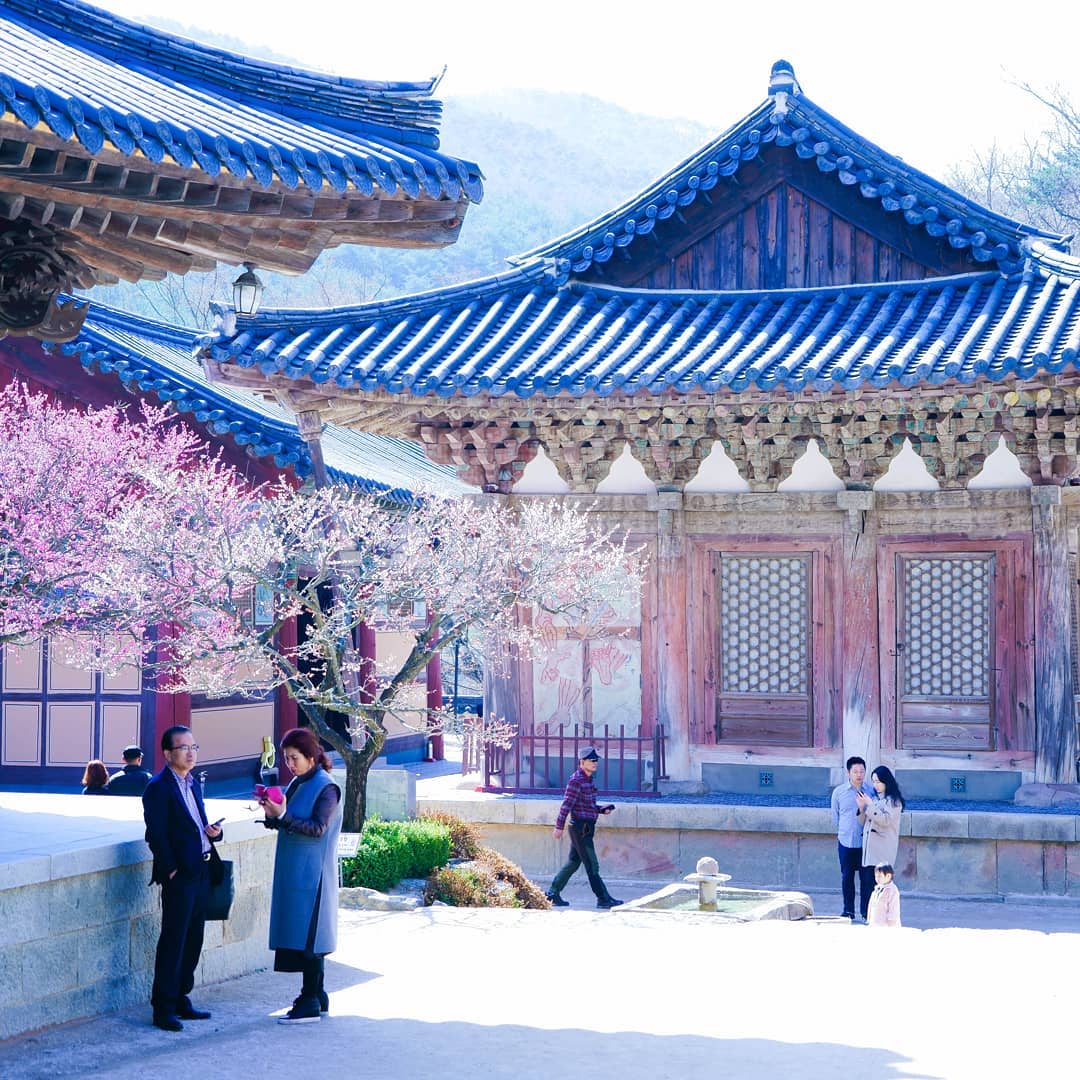
Located in southern part of Mt. Chiseosan, Tongdosa Temple is famous for not having any Buddhist statues in the temple. This is because the real shrines of the Buddha are preserved here. The name 'Tongdosa' was named after the belief that mankind can be saved through Buddhism. After Monk Ja-Jang brought the shrines of Buddha from Dang China, Tongdosa Temple was built during Queen Sun-Deok's reign. Its Beopdeung (temple candle) hasn’t gone out for over 1300 years. The temple is similar to a museum because of the numerous relics inside.
20. Bongwonsa Temple (봉원사)
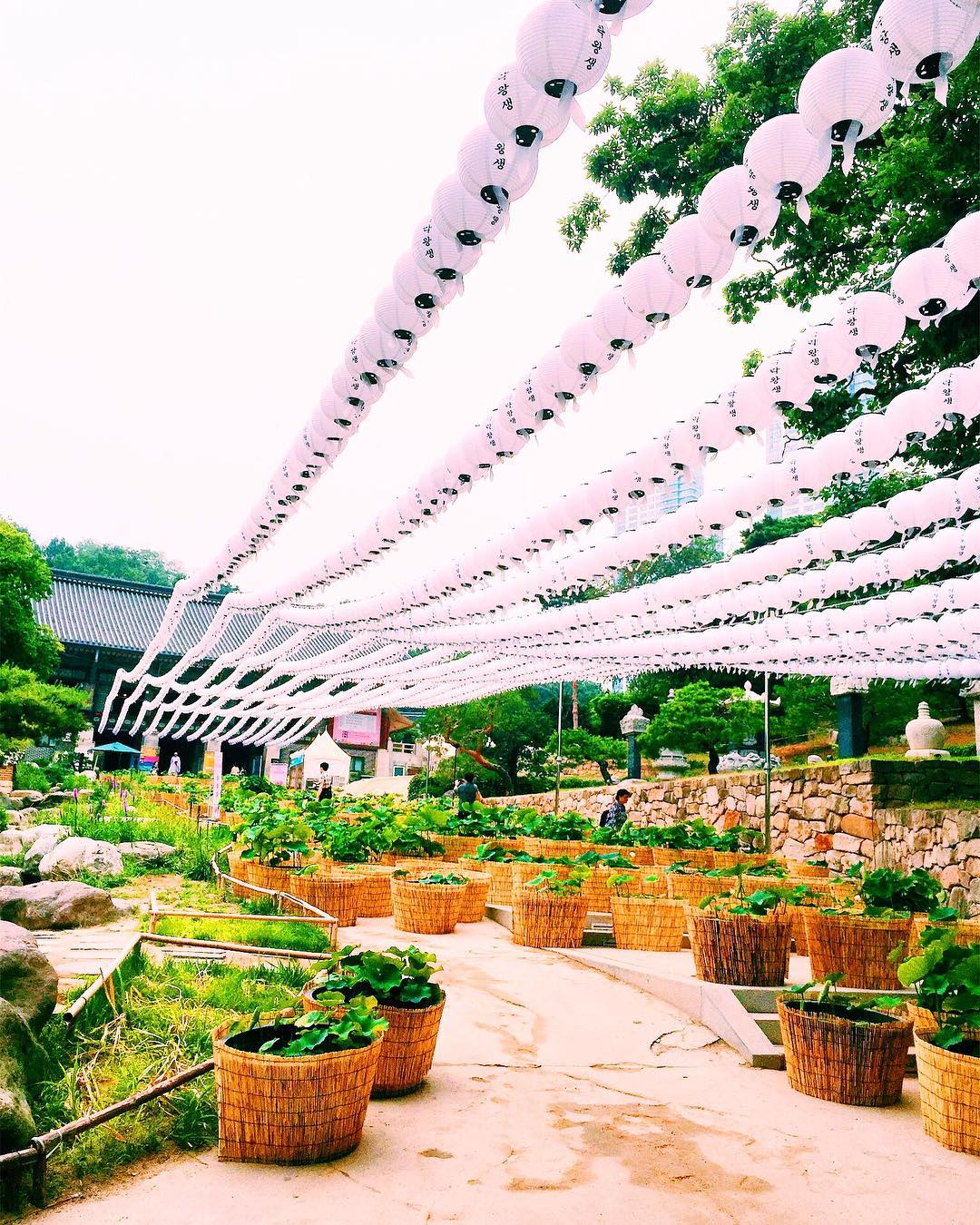
Located at the skirt of Ansan Mountain in Bongwon-dong, Seodaemun-gu, Seoul, Bongwonsa temple, as the center of Korean Buddhism Taego, is a thousand-year-old temple with a long history and tradition.“Yeongsanjae”, one of the Buddhist rituals takes place at Bongwonsa on June 6 every year wishing for the world peace and the reunification of North and South Korea. It was designated as one of the Intangible Cultural Heritage of Humanity by UNESCO in 2009.
21. Baekyangsa Temple (백양사)
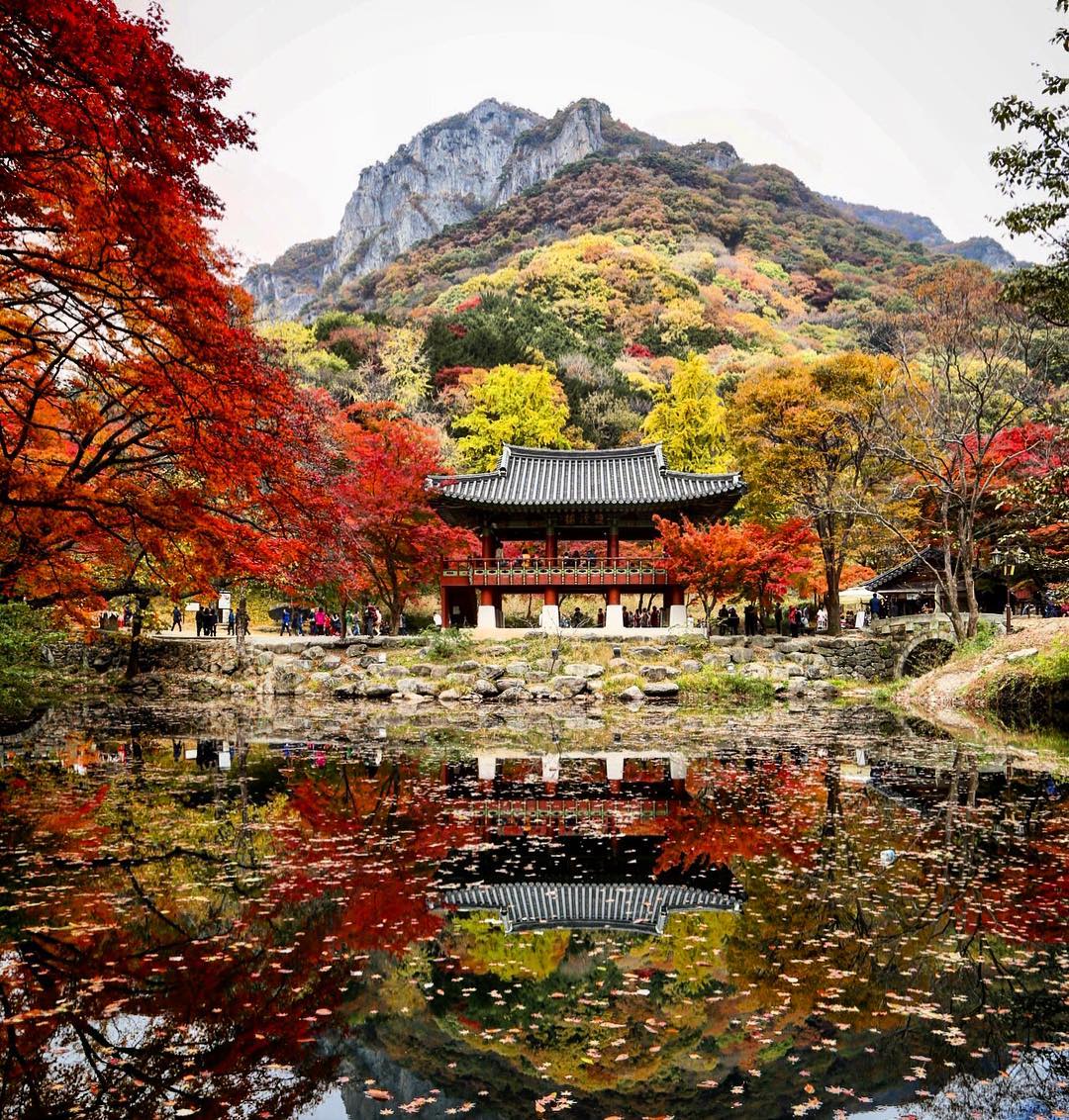
Founded during the reign of King Mu of the Baekje Dynasty (632), Baekyangsa Temple is located within Naejangsan National Park. The combination of the mountain and valleys on both sides creates beautiful scenery. Nature reveals its beauty throughout all seasons here especially the red maple leaves during the fall. You will appreciate the breathtaking view of Ssangyeru shimmering in the pond.
22. Golgulsa Temple (골굴사)
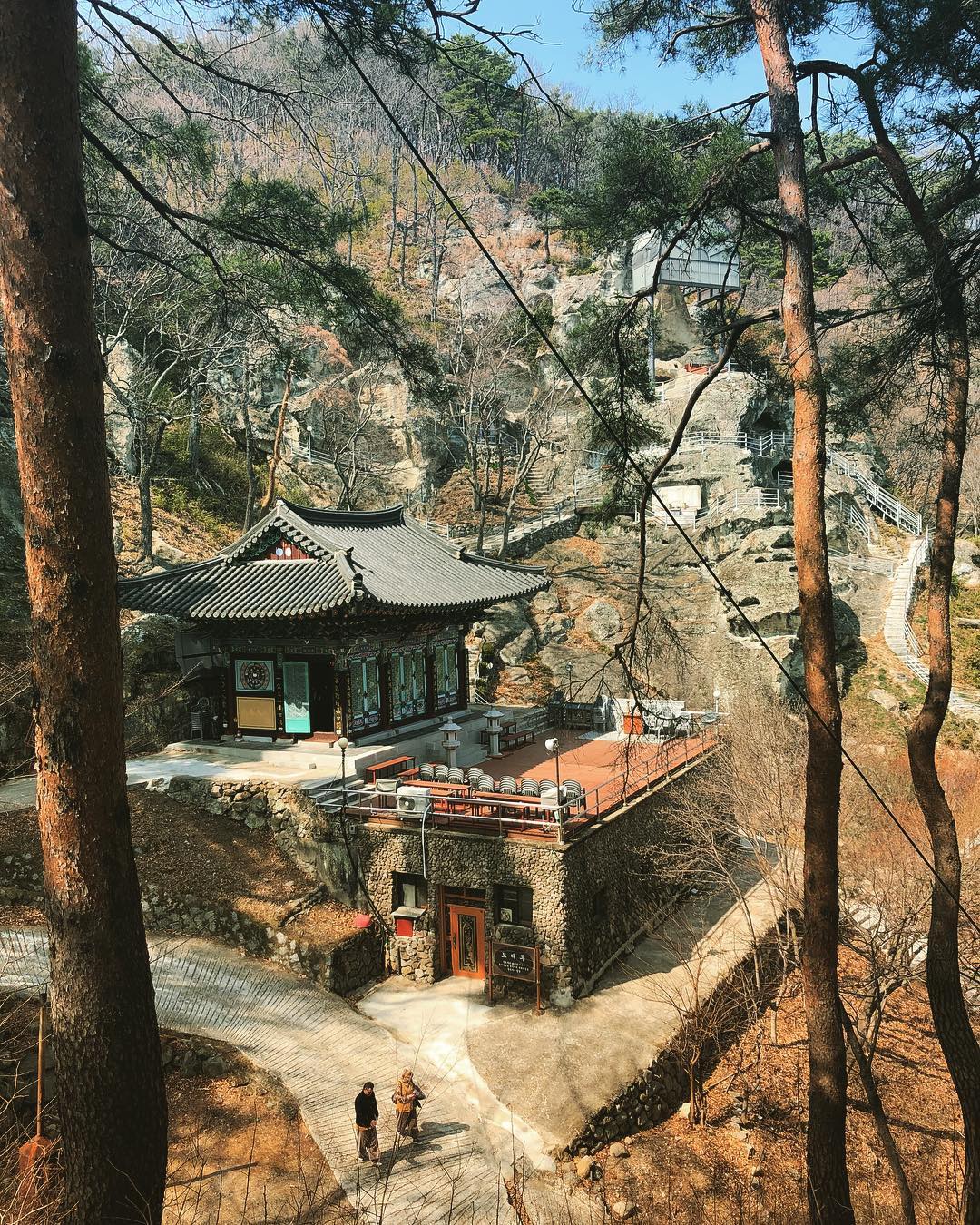
Located at the foot of mountain Hamwol, Golgulsa is the only temple cave in Korea. The temple was built out of solid rock during the 6th century by Saint Gwang Yoo and some accompanying monks and was designed according to the architectural structure of India. On the top of the temple stands a sculpture of the Maya Tathagata Buddha and surrounding the sculpture are twelve rock caves used as a prayer sanctuary. Seven of the twelve rock cave sanctuaries are still standing today. Golgulsa’s main attractions are the sculpture of the Maya Tathagata Buddha and the Gwaneum Cave. The Buddha sculpture displays the characteristics of the Shilla Buddha and is 4 meters high.
23. Oeosa Temple (오어사)
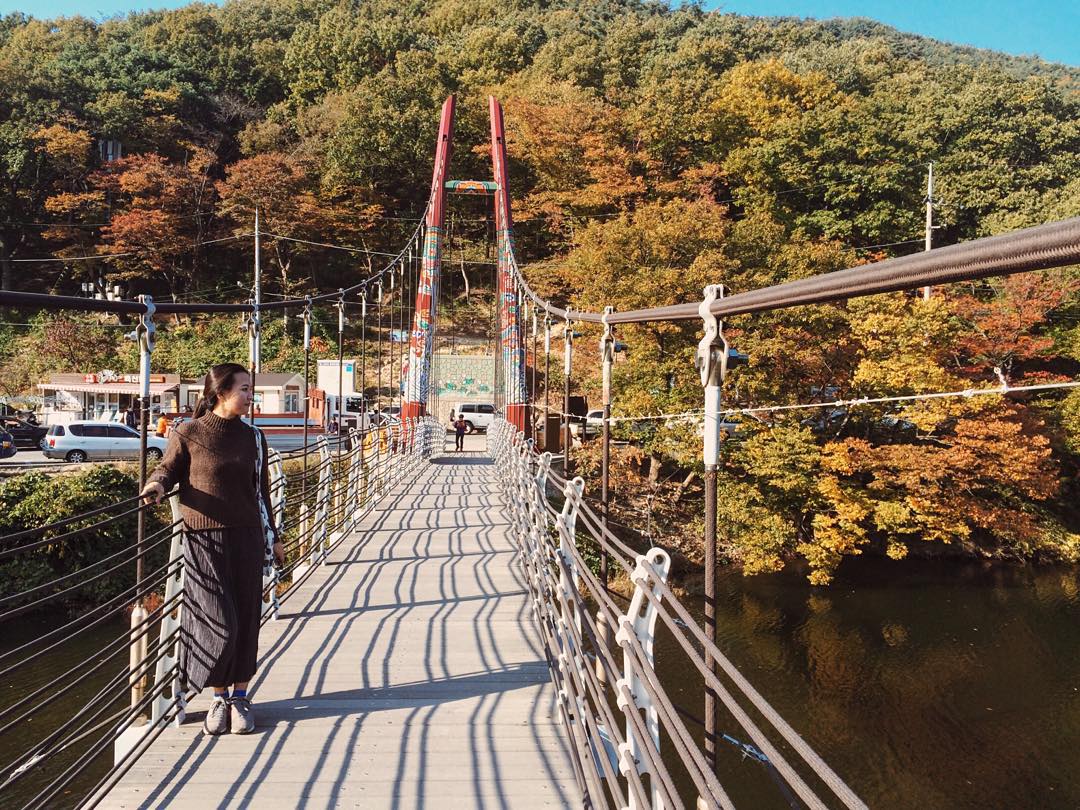
Oeosa, which has scenic beauty of Oeo lake and rock cliffs, was built during the reign of King Jinpyeong of the Silla Dynasty. There is an interesting legend regarding the naming of the temple - when Wonhyo Daisa and Hyegong Sunsa, two of the four most important Buddhist figures in the Silla Dynasty, were practicing asceticism at this temple, they competed against each other in reviving a fish with their Buddhist power. One fish lived and one died, and so the two monks both argued that the living fish was the one that he revived.
24. Botapsa Temple (보탑사)

Botapsa has a short history compared to the numerous thousand-year-old temples on this list, but it has a three-story wooden pagoda - the only one in Korea that is actually mountable - and a beautiful scene adorned with over 200 different kinds of wildflowers. Botapsa currently offers three different temple-stay programs - My Beautiful Life, Temple Life and Rest.
25. Mangwolsa Temple (망월사)
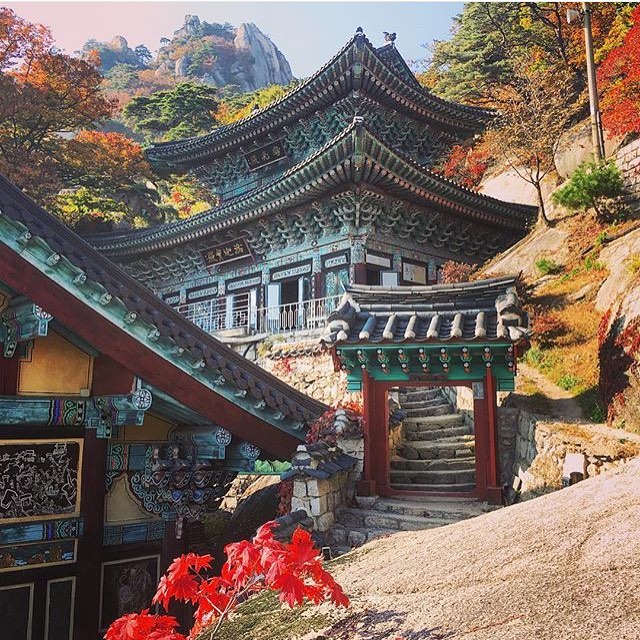
Mangwolsa Temple is the oldest temple within the Namhansanseong Fortress walls. Once housing Buddhist monk soldiers who practiced Buddhism and protected the walls from invaders, the temple has stood in this spot since 1624. This temple offers a different perspective on the role that Buddhist monks played in the history of Korea while at the same time offering some stunning views of the surrounding mountainsides. The pagoda on the grounds is also gorgeous and the intricate carvings could leave any visitor walking in circles for some time to take it all in.
26. Jingwansa Temple (진관사)
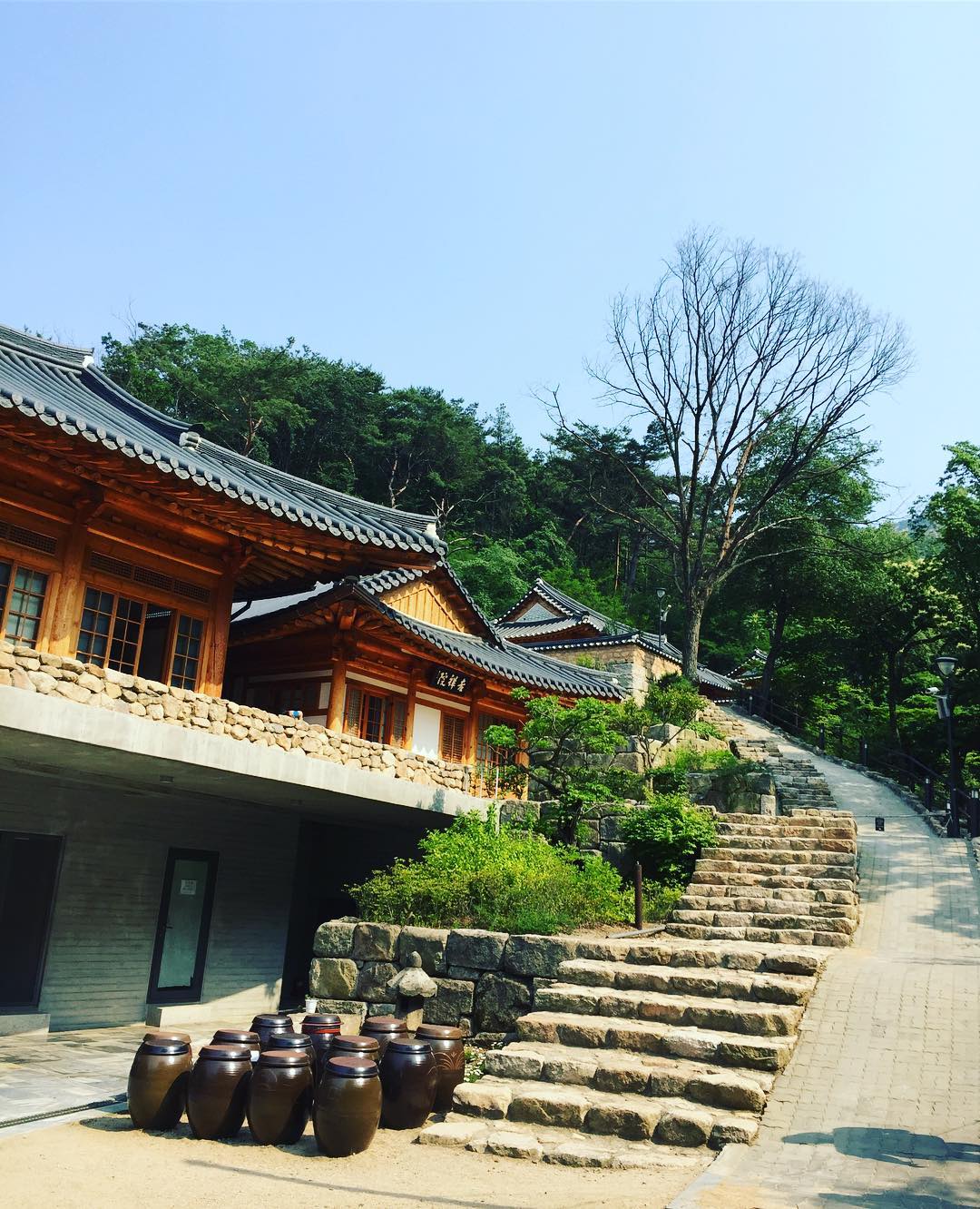
Jingwansa Temple, located to the west of Seoul, is one of the four major temples around Seoul. The temple was dedicated to Preceptor Jingwan in 1010 BC by King Hyeonjong, the 8th king of the Goryeo Dynasty. During the Joseon Dynasty, King Sejong built a library in Jingwansa for Confucian scholars to visit and read. The temple is not the only neighbor to the beautiful surrounding of Bukhansan National Park, but also contains an impressive collection of cultural and historic properties. It also provides a quiet place for urbanites to enjoy all the while sharing the teachings of Buddha.
27. Ssangbongsa Temple (쌍봉사)
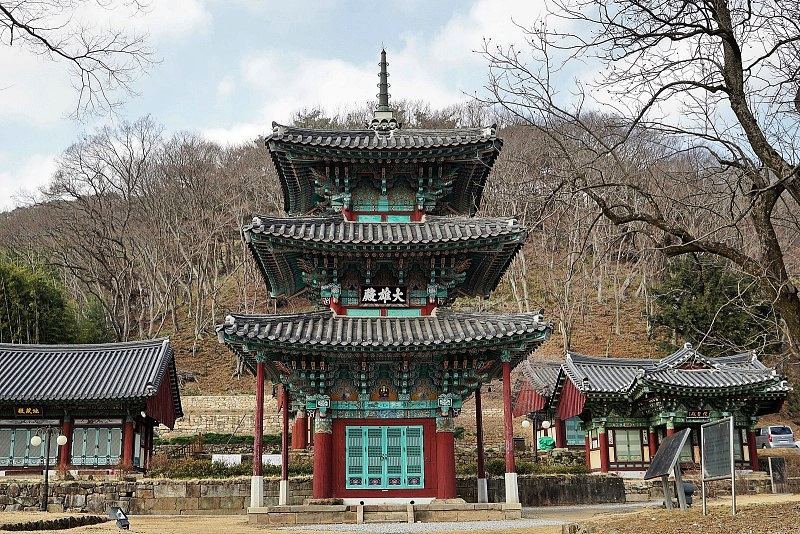
Ssangbongsa, or Ssangbong Temple, is part of the Jogye Order of Korean Buddhism located in rural Jeung Village, Iyang Township, Hwasun County, South Jeolla Province, South Korea. Ssangbongsa was established by Zen Priest Cheolgam in 868 during the Unified Silla era. 'Ssang' means twin and 'Bong' means peak so Ssangbongsa derives its name from the pair of twin peaks on the mountain behind the temple.
28. Yeongoksa Temple (연곡사)
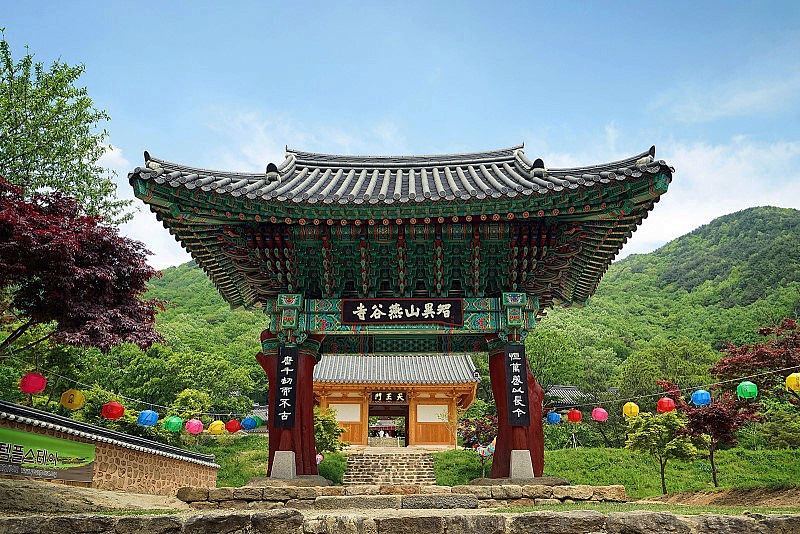
Yeongoksa Temple is located in Gurye-gun and was constructed by Yeongi, a high Buddhist monk, who also helped create Hwaeomsa Temple. The temple has continued to house two national treasures: East Monk Stupa of Yeongoksa Temple and North Monk Stupa of Yeongoksa Temple. Jangsungbu, a Buddhist monk at the time, demolished the previous temple and rebuilt a Buddist sanctuary on the site. It has 5 rooms in the front and 3 rooms on the side made with embankments of granite stones and natural stones.
29. Waujeongsa Temple (와우정사)

Waujeongsa Temple was established in 1970 by Kim Hae-Geun. The temple is not only a reflection of the monk’s sincere hope for the reunification of the North and South but is also the birthplace of the Korean Buddhist Nirvana Order. There are over 3,000 Buddhist statues on the temple grounds, the most famous of which are the Buldu (Buddha heads) placed at the entrance and the Wabul (reclining Buddha statue) stationed in the middle of the mountain. The 8m-high Buldu is the largest of its kind and the Wabul, which is made from a juniper tree from Indonesia, is 3m in height and 12m in length.
30. Sanbanggulsa Grotto (산방굴사)
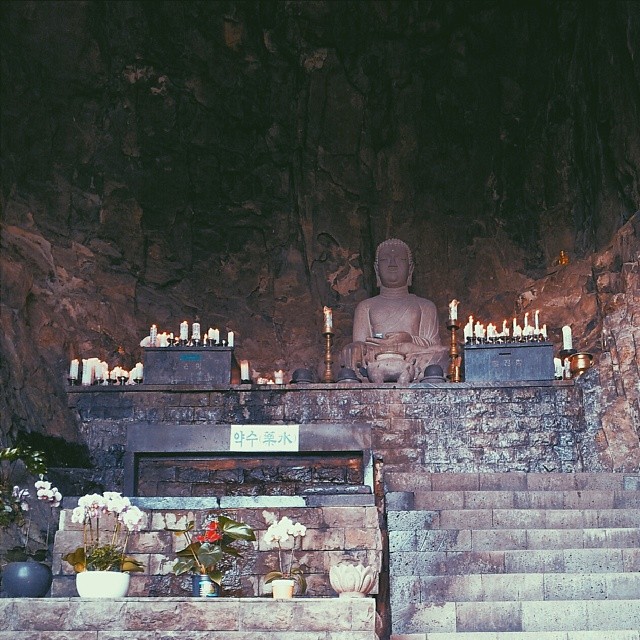
The peak of Hallasan Mountain was taken off and thrown away, which then became Sanbangsan Mountain. The 5m-high rock cave at the cliff on the southwest side of the mountain was originally called Sanbanggul Cave, but it is called a temple now because it possesses a Buddhist statue. Inside the cave, you can see Marado Island and the Dragon Head Coast. On the Dragon Head Coast is the Hamel Memorial Monument. You can also see small ponds being made by the water drops that fall from the ceiling all through the year. The plant zone on a cliff of Sanbangsan Mountain is also designated as a natural monument.